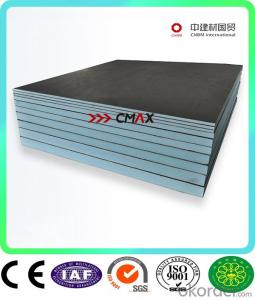When it comes to modern construction, the focus has shifted towards materials that are not only strong and durable but also environmentally friendly. Enter the concrete sandwich panels, a versatile and innovative building material that has been gaining popularity in recent years. These panels are designed to provide both structural strength and insulation, making them an ideal choice for a wide range of construction projects.
Let’s dive into the world of concrete sandwich panels and explore their unique properties, advantages, and applications in the building industry.
The Beauty of Simplicity
Concrete sandwich panels are composed of two outer layers of concrete with an inner layer of insulation material. This simple yet effective design allows for a lightweight and easy-to-handle building material that can be quickly assembled on-site. The panels can be prefabricated to fit specific project requirements, streamlining the construction process and reducing the overall time and labor costs.
Structural Integrity
One of the key benefits of concrete sandwich panels is their exceptional structural strength. The concrete layers provide a robust and stable foundation, capable of withstanding heavy loads and various environmental conditions. This makes them suitable for both residential and commercial buildings, as well as for use in structural elements such as walls, floors, and roofs.
Thermal Insulation
In addition to their strength, these panels offer excellent thermal insulation properties. The insulation layer between the concrete layers helps to maintain a consistent indoor temperature, reducing the need for additional heating or cooling systems. This not only contributes to energy efficiency but also enhances the overall comfort of the building’s occupants.
Sustainability and Eco-Friendliness
Concrete sandwich panels are an environmentally conscious choice for builders and architects. The production process is energy-efficient, and the panels themselves have a low carbon footprint. Moreover, the use of recycled materials in the manufacturing process further contributes to their eco-friendliness.
Versatility in Design
The panels’ versatility is another advantage that cannot be overlooked. They can be customized in terms of size, shape, and color to fit the specific design requirements of a project. This flexibility allows architects to unleash their creativity and create unique, aesthetically pleasing structures that stand out.
Durability and Longevity
Durability is a hallmark of concrete sandwich panels. They are resistant to moisture, corrosion, and other forms of wear and tear, ensuring a long service life for the buildings they are used in. This reduces the need for frequent maintenance and repairs, saving both time and money in the long run.
Installation and Assembly
The ease of installation is a significant advantage of concrete sandwich panels. They can be quickly assembled on-site, reducing the construction timeline and associated costs. This is particularly beneficial for large-scale projects where time is of the essence.
Cost-Effectiveness
While the upfront cost of concrete sandwich panels may be higher than some traditional building materials, their long-term cost savings in terms of reduced maintenance, energy efficiency, and durability make them an attractive investment.
Applications in Various Sectors
Concrete sandwich panels are not just limited to residential and commercial buildings. They are also finding their way into industrial, agricultural, and even infrastructural projects. Their adaptability and robustness make them suitable for a wide range of applications.
The Future of Construction
As the construction industry continues to evolve, the demand for innovative and sustainable building materials is on the rise. Concrete sandwich panels are poised to play a significant role in shaping the future of construction, offering a combination of strength, durability, and eco-friendliness that is hard to match.
In conclusion, concrete sandwich panels are a testament to the power of innovation in the field of construction. They offer a multitude of benefits, from structural strength and thermal insulation to sustainability and design versatility. As we move towards a greener and more efficient future, these panels are likely to become an increasingly popular choice for builders, architects, and homeowners alike.

